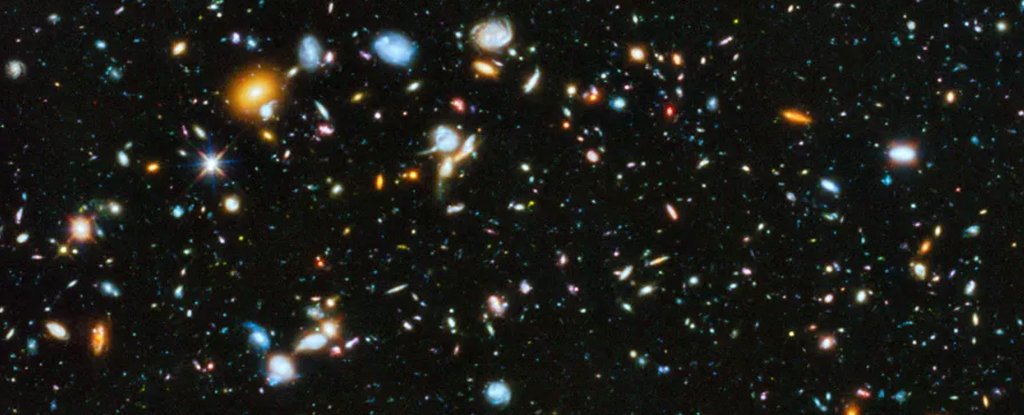Products You May Like
In attempts to understand the very nature of our reality, physicists sure have some mind-bending theories. Like what if information is a tangible and fundamental aspect of physical reality itself – alongside matter and energy? Or, alternatively, what if information is the fifth state of matter?
Information is, after all, something all matter and energy measurably possess. The rules that govern their existence, like their mass, speed, or charge, are all bits of information they contain.
So to allow experimental probing of such ideas, physicist Melvin Vopson from the University of Portsmouth in the UK estimated how much information a single elementary particle, like an electron, stores about itself. He then used this calculation to estimate the staggering amount of information contained in the entire observable Universe.
“It is the first time this approach has been taken in measuring the information content of the Universe, and it provides a clear numerical prediction,” Vopson says.
Vopson estimated that each particle in the observable Universe holds 1.509 bits of information, using Claude Shannon’s information theory.
This theory ties entropy – the amount of uncertainty in a system – with information: The information content of a message is a measure of how much uncertainty is reduced by the message. But different types of messages have different values.
For example, the outcome (the message) of a fair coin flip has 1 bit of information: this event was heads, not tails. If the coin was double-headed, the expected outcome of heads has 0 bits of information, because it doesn’t add anything new to what we already knew.
But if the coin is biased towards heads and you end up with tails, this surprising outcome provides a bit more information than a routine 1 bit event: This event was tails and it wasn’t expected.
Vopson applied these information entropy calculations to the mass, charge, and spin of protons, neutrons (and their composing quarks), and electrons, to arrive at his estimate for how much information they hold.
Then, using estimates of how many of these particles exist, he multiplied it out to the entire Universe.
The result was around a 6 followed by a staggering 80 zeros in bits of information, which is actually lower than previous estimates. But Vopson expected this, given past calculations tried to account for the entire Universe, whereas he restricted his calculation to the observable parts only – excluding antiparticles and forces (like light bosons).
“We have considered all bosons to be force/interaction particles responsible for the transfer of information, rather than storage of information,” Vopson writes. “We postulate that information can only be stored in particles that are stable and have a non-zero rest mass, while interaction/force carrier bosons can only transfer information via waveform.”
He also didn’t include unstable particles or antiparticles, given their lifetimes are extremely short, “so their observation is only possible via artificially created experimental conditions or theoretically,” he writes. “Therefore, their participation to the observable Universe is negligible and, by extrapolation, their capacity to register information is also negligible.
“But it is important to mention that information could also be stored in other forms, including on the surface of the space-time fabric itself, according to the holographic principle.”
The idea that information is physical has been around since the 1920s. Since then, experiments have demonstrated a link between information theory and thermodynamics, and led to the wild idea that the Universe is simulated in 3D from a 2D reality.
“These radical theories are based on the principle that information is physical, the information is registered by physical systems, and all physical systems can register information,” Vopson explains.
Building on this, Vopson had previously proposed that information might be a fifth state of matter, alongside solid, liquid, gas, and plasma, and even more wildly, that information might be the dark matter that physicists have been hunting for.
These new calculations could help test these strange and fascinating hypotheses.
“The current approach offers a unique tool for estimating the information content per elementary particle, which is very useful for designing practical experiments to test these predictions,” Vopson concludes.
Besides, if light can be a particle, and physical states can be undetermined until observed, why the heck couldn’t information be a physical and fundamental part of the Universe?
This research was published in AIP Advances.
